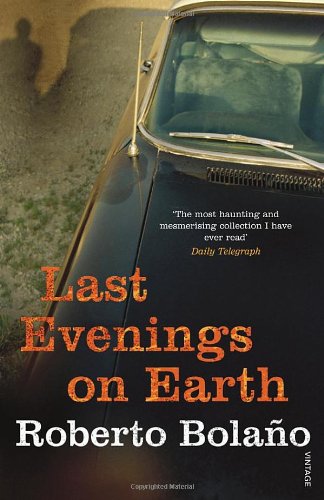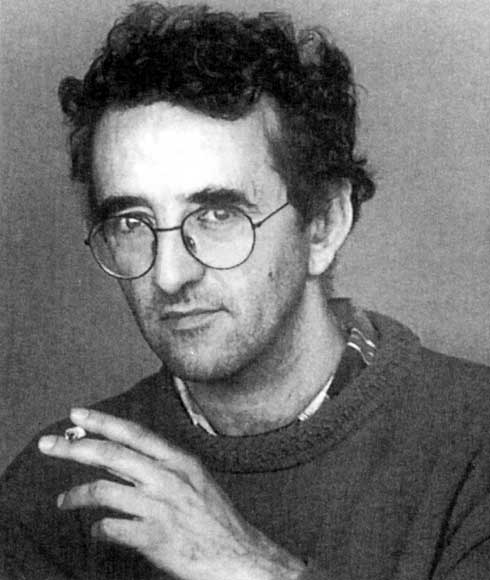
photo by Donovan Beeson
by Anushree Nande
The way in which my friendship with Sensini developed
was somewhat unusual…
So begins a narrative that appears very usual and routine on the surface, even a bit one-dimensional. It sees the correspondence between an unnamed narrator and a famed writer, which develops into an unlikely friendship. ‘Sensini’ is the opening story from Roberto Bolaño’s Last Evenings on Earth, the first collection by the Chilean writer-poet to be published in English. Many of the stories are narrated from a first person point of view, and often this narrator is referred to as ‘B.’, or ‘Arturo Belaño’ – who also appears in Bolaño’s novel The Savage Detectives and is believed to be the author himself.
The narrators of this collection are failed artists, poets and writers struggling to get by in a world that has left them hopeless, a world where the Mexican and Chilean dictatorship wars are a constant underlying backdrop. This hidden layer of pain and suffering adds necessary depth to stories that otherwise appear deceptively flat, with their sparse language and lack of common narrative framework.
 In ‘Sensini’, Bolaño introduces an unnamed narrator who starts a correspondence with famed Argentinean writer Luis Antonio Sensini. The story starts with the narrator – a poor, twenty-eight year old, aspiring writer-poet living in Girona – who has recently lost his job as a night watchman on a Barcelona campsite. We know little of his appearance, what his likes and dislikes are, or what his history is. The same goes for Sensini. Bolaño shows only the most basic of character details: Luis Antonio Sensini is sixty years old; he lives in Madrid with his wife, Carmen Zadjman, and daughter, Miranda; he is a heavy smoker; and he translates work for a publisher.
In ‘Sensini’, Bolaño introduces an unnamed narrator who starts a correspondence with famed Argentinean writer Luis Antonio Sensini. The story starts with the narrator – a poor, twenty-eight year old, aspiring writer-poet living in Girona – who has recently lost his job as a night watchman on a Barcelona campsite. We know little of his appearance, what his likes and dislikes are, or what his history is. The same goes for Sensini. Bolaño shows only the most basic of character details: Luis Antonio Sensini is sixty years old; he lives in Madrid with his wife, Carmen Zadjman, and daughter, Miranda; he is a heavy smoker; and he translates work for a publisher.
Throughout the story, we learn little more about the characters’ lives, and what we do learn comes fleetingly and without explanation. The small amount of information that Bolaño does allow us comes from the content of the characters’ letters. Much of their conversations revolves around different literary competitions, which they encourage each other to enter. But we also see slivers of their lives carefully threaded through the story.
We discover that the narrator has written a summary of his life story in one of his letters to Sensini, though Bolaño cleverly keeps us in the dark about its contents. We also find that Sensini’s thirty-five year old son from a previous marriage, Gregorio, is missing and feared dead. (This is a good example of how the hidden narrative of Bolaño’s stories often interacts with the main thread: the impact of the dictatorship creates a strong sense of guilt and sadness in Sensini.)
Throughout, Bolaño reveals just enough information to show hidden characteristics and the world around his characters, without bombarding us with detail. By telling us that Sensini hadn’t lived with Gregorio since the boy was five years old, Bolaño indirectly tells us more about Sensini’s guilt, regret and current state of mind than a summary could. For me, this minimalist technique is what makes the story so successful.
There is also an inherent sparseness to the writing, which makes the story read almost like a set of facts. Initially, ‘Sensini’ could appear to be a first draft, jotted down without a break from start to finish, with no coherent structure or form:
At the time I was twenty-something and poorer than a church mouse. I was living on the outskirts of Girona, in a dilapidated house that my sister and brother-in-law had left me when they moved to Mexico, and I had just lost my job as a night watchman in a Barcelona campsite, a job that had exacerbated my tendency not to sleep at night. I had practically no friends and all I did was write and go for long walks …
 But with closer reading we realise that Bolaño is expertly showing how brevity can be deceptive; it should not be mistaken for simplicity. In ‘Sensini’, the brevity evokes the utter loneliness and isolation of the main characters. An emotional cocktail of guilt, pain, love, hope and hurt swirls beneath the ‘simple’ surface that Bolaño has created.
But with closer reading we realise that Bolaño is expertly showing how brevity can be deceptive; it should not be mistaken for simplicity. In ‘Sensini’, the brevity evokes the utter loneliness and isolation of the main characters. An emotional cocktail of guilt, pain, love, hope and hurt swirls beneath the ‘simple’ surface that Bolaño has created.
There is one final ingredient that adds to the impact of Bolaño’s stories, and it stems from the fleeting style of his writing. ‘Sensini’ begins somewhere in the middle and it ends without conclusion, yet there is sense of a new beginning, of sorts – though we never really know what happens to the narrator or Miranda (Sensini’s daughter) after Sensini’s death:
…and we stood there for a while looking at the moonlit city. Suddenly I realised that we were at peace, that for some mysterious reason the two of us had reached a state of peace, and that from now on, imperceptibly, things would begin to change.
Deployed separately, his sparse and unusual techniques wouldn’t be as effective. Together, they make Bolaño’s stories utterly charming and engaging. In ‘Dentist’, also from Last Evenings on Earth, Bolaño writes: ‘the secret story is the one we’ll never know, although we’re living it from day to day’. This sense of intrigue seems to characterise both his writing style and his own preoccupations: the unresolved mysteries of being, the force of the unsaid, and the notion that we don’t need to understand everything to know life’s beauty or to feel its pain.


Thanks for this one Anushree. A friend just gave me a copy of Bolano’s Between Parentheses – a collection of essays, articles and speeches… You’ve whetted my appetite for it!
Thanks for reading and the kind feedback, Mike 🙂 I haven’t read “Between Parentheses” but it sounds wonderful, you’ll have to tell me what it’s like!